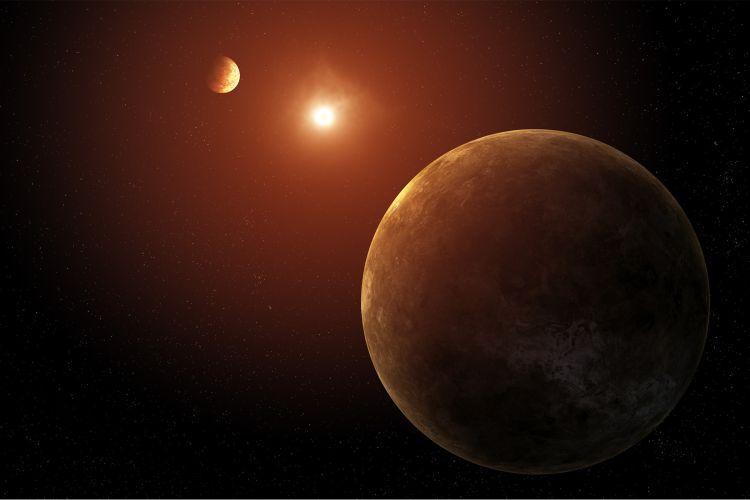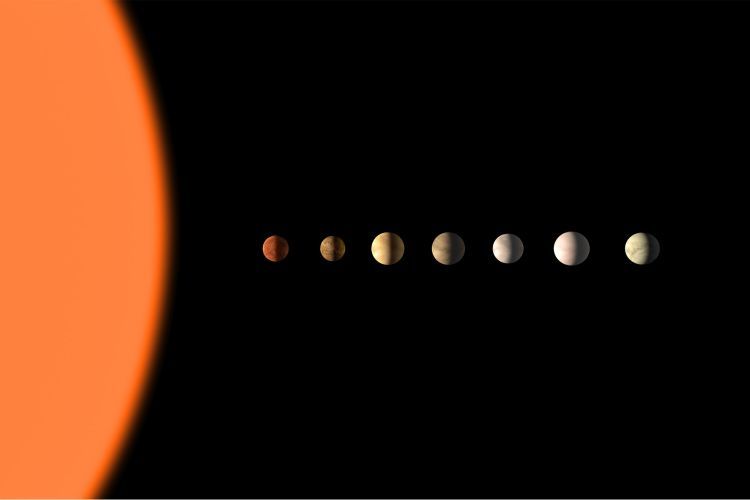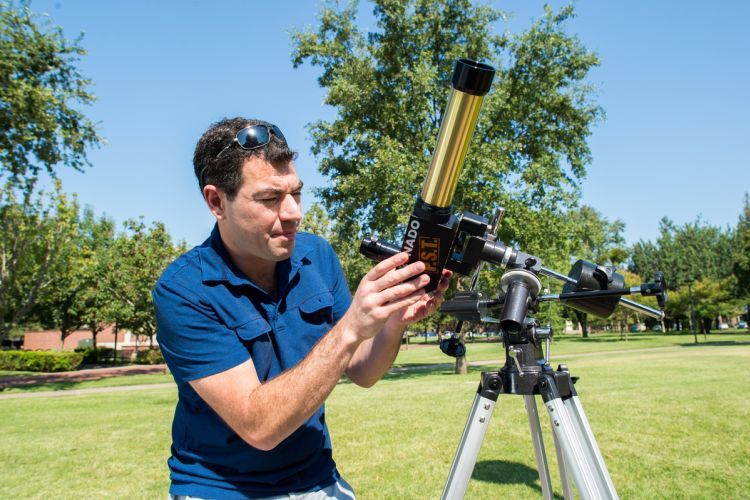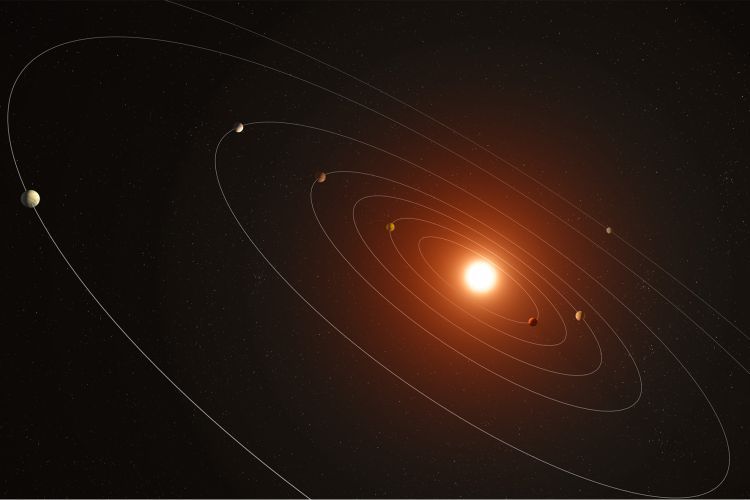Breadcrumb
Pacific professor’s research changes understanding of planetary systems

(Credit: NASA/Daniel Rutter) Artist’s concept showing two of the seven planets discovered orbiting a Sun-like star. The system, called Kepler-385, was identified using data from NASA’s Kepler mission.
A University of the Pacific professor is part of a team of scientists who have published a groundbreaking new catalog of exoplanets—planets that orbit stars beyond the solar system.
The catalog includes some exoplanet discoveries that were previously unknown to astronomers including Kepler-385, the first planetary system found to contain seven hot planets.
“Even the outermost planet at Kepler-385 receives more than eight times as much heat from its star than the Earth receives from the sun,” said Associate Professor of Physics Daniel Jontof-Hutter. “The Kepler dataset changed our ideas of what kinds of planets and planetary systems are typical in our galaxy.”
Jontof-Hutter collaborated with researchers from NASA Ames Research Center in California’s Silicon Valley and other universities around the country and in Canada. Alumnus Kadri Nizam ’19, now a graduate student at Pennsylvania State University, also worked with Jontof-Hutter on the research as an undergraduate student at Pacific.
Their findings will be published in the Planetary Sciences Journal and were shared in a news release from NASA’s Ames Research Center.

(Credit: NASA/Daniel Rutter) Artist’s concept of Kepler-385, the seven-planet system revealed in a new catalog of planet candidates discovered by NASA’s Kepler space telescope.
“It is validating to see that our findings are in alignment and improve upon previous studies,” Nazim said. “Being part of this collaboration was a valuable experience as an undergraduate. It allowed me to apply the skills that I acquired in class and gave me insight into the tireless effort that goes into pushing the boundaries of science.”
The project reanalyzed data collected by NASA’s Kepler Space Telescope which operated in its primary mission from 2009-2013. Kepler continually monitored about 160,000 distant stars searching for the signal of exoplanets. Jontof-Hutter became involved in the mission while working as a postdoctoral researcher at NASA Ames.
"The more we understand about our cosmic neighbors, the closer we are to revealing Earth’s place in the family of planets.” - Associate Professor Daniel Jontof-Hutter
Using newer techniques that allow for more precision, the team dramatically improved measurements of the sizes and orbital periods of thousands of exoplanets. The catalog includes almost 4,400 planet candidates, including more than 700 systems with multiple planets. NASA describes a planet candidate as a “likely planet” discovered by a telescope but not yet proven to exist.
“We’ve assembled the most accurate list of Kepler planet candidates and their properties to date,” said Jack Lissauer, a research scientist at NASA’s Ames Research Center and lead author on the paper. “NASA’s Kepler mission has discovered the majority of known exoplanets, and this new catalog will enable astronomers to learn more about their characteristics.”
The new catalog enables the authors to study exoplanets as a population and compare exoplanetary systems to our own solar system as well as to each other. It enhances our understanding of some of the differences between systems where a single planet orbits a star and multi-planet systems.

Daniel Jontof-Hutter
The work of Jontof-Hutter and Nizam confirms with greater confidence that systems with multiple planets have significantly fewer giant planets, and that planets in two-planet systems are typically larger than those found in systems with multiple planets. Their results also show that single planets have a much wider distribution of orbital periods than planets in multi-planet systems.
“This study is a step forward in our understanding of how diverse planetary systems are,” Jontof-Hutter said. “These discoveries further highlight how different exoplanetary systems are from the solar system. The more we understand about our cosmic neighbors, the closer we are to revealing Earth’s place in the family of planets.”
In addition, the improved catalog will aid future studies of the Kepler planets.
“Observers using the James Webb Space Telescope or ground-based telescopes need precise parameters in order to choose their targets for maximum scientific gain and to plan their observations,” Jontof-Hutter said. “You can’t point a telescope at a star if you are not sure exactly when the planet is going to be detectable.”

(Credit: NASA/Daniel Rutter) Artist’s concept of Kepler-385, the seven-planet system revealed in a new catalog of planet candidates discovered by NASA’s Kepler space telescope.
Other researchers who collaborated on the research include: Jason F. Rowe at Bishops University in Canada, Eric Ford at Penn State, Daniel C. Fabrycky at the University of Chicago, Darin Ragozzine at Brigham Young University and Jason H. Steffen at the University of Nevada Las Vegas.
Several other professors in Pacific’s Department of Physics and Astronomy have also been involved in high-profile astronomy research. Assistant Professor of Physics Dustin Madison is part of a team of international scientists that recently released breakthrough findings on gravitational waves, Associate Professor of Physics Guillermo Barro is among the first scientists selected by NASA to study images and data from the powerful James Webb Space Telescope and Assistant Professor of Physics Elisa Toloba recently published new discoveries involving the Virgo Cluster, a large grouping of galaxies near the Milky Way.





